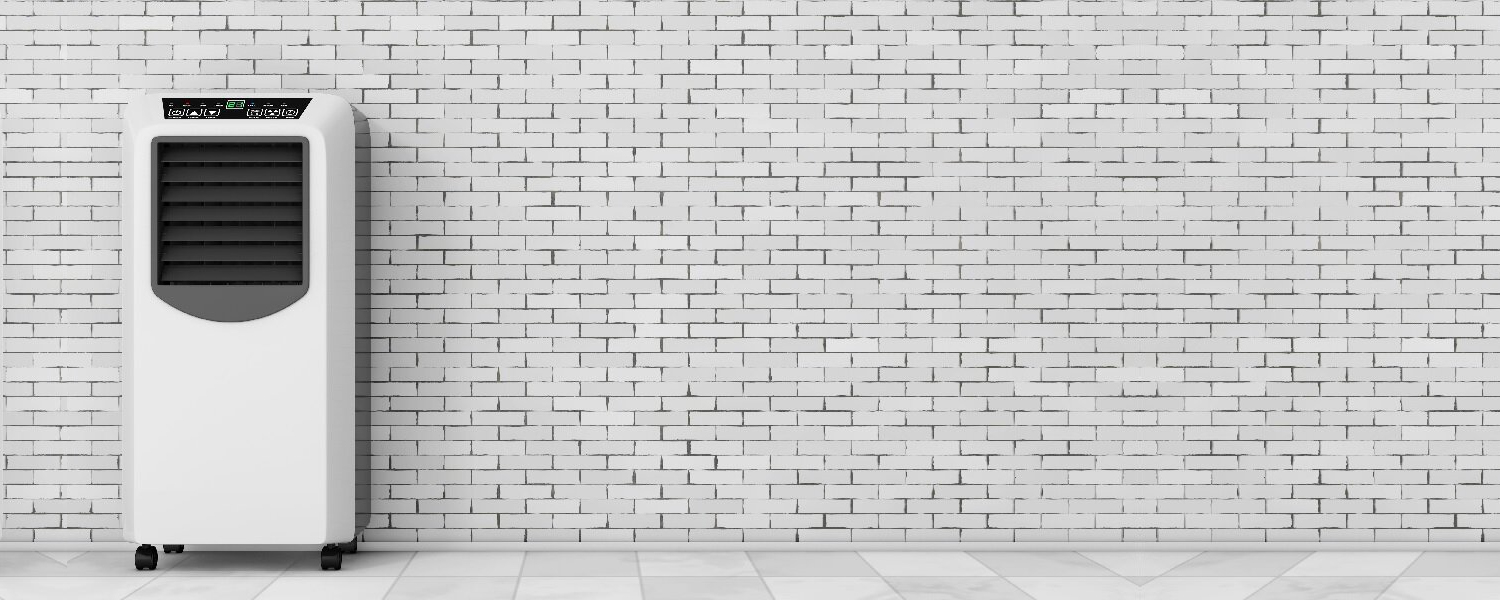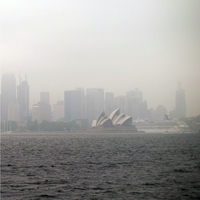
Why filter indoor air?
A wide range of factors impact the quality of indoor air we breathe, from various toxicants in our external environment, to the more locally impacting pollutants such as furnishings or products we use at home. Depending on your location and circumstances, an indoor air filter (also called an air cleaner or purifier) could be valuable for your health. Given the broad range of air filtration devices on the market, it can be difficult to know how to compare models or which technical specifications to look for. Indoor air regulations do not currently exist in Australia, and there is no framework for testing or maintenance standards when it comes to air purification devices (1). Since indoor air quality (IAQ) is a broad topic, and may apply to many locations including homes, offices, schools, shopping venues, recreational buildings, restaurants or vehicles, this article is primarily focusing on mechanical and electronic air filtering devices used for IAQ in residential settings.
Various pollutants reside in our indoor air supply (Table 1) all of which have been linked to various acute and chronic health issues. In Australia, 80 - 100% of our time is being spent indoors (2), and the National Health and Medical Research Council (NHMRC) define IAQ as “air within a building occupied for at least one hour by people of varying states of health”(3).
Common sources of toxicants include building materials, furnishings and various heating or cooling appliances. Toxic load is further increased by exposure to a range of chemicals such as those found in personal care and cleaning products. Despite this, it often comes as a surprise to many that our IAQ is often more compromised than outdoor air (4,5).
Depending on which combination of hazards we are being exposed to daily, health risks resulting from air pollution vary from one individual to the next. However, we may be able to manage or minimise some of these by utilising an air filtration system where we mostly spend time.
Table 1 Common indoor air pollutants in Australia
|
Pollutant |
Details |
|
House dust mites |
These tiny organisms can instigate a range of asthmatic and allergic conditions (6). Regardless of cleaning frequency or method, it is impossible to completely eliminate numbers; food sources for house dust mites are usually microscopic, such as dead human skin cells, fungal spores and pollen (7). |
|
Plants and pollens |
There are a many known pollen-producing plant varieties that can seasonally or continuously cause asthmatic and allergic rhinitis symptoms (8). |
|
Pets, animals and insects |
There is a common misconception that furry pets come with a higher allergenic load however it is actually various proteins found in saliva, urine and dander (skin cells) of animals that play a role in allergic conditions such as asthma. Exposure can occur directly by animals and can also be brought in on clothing or shoes, then made airborne and recirculated indoors (9).
Faecal matter from cockroaches and other arthropods can cause allergies and respiratory issues (6). |
|
Ozone |
According to recent figures, Sydney and Melbourne in particular have reported either a steady increase of ozone levels or have been consistently exceeding the allowable national standard of ozone since 2010 (10).
Symptoms of elevated ozone exposure include irritation of the eyes, upper and lower airways, reduced lung function and more serious long-term complications such as asthma and chronic obstructive pulmonary disease, which can further damage the lungs even when symptoms have disappeared (11). |
|
Gases and particulate matter from combustion and vehicular exhaust |
Although they are naturally found in smaller amounts in our environment, several gases expelled due to synthetic combustion can be harmful to our health.
Carbon monoxide, carbon dioxide and nitrogen dioxide emitted from fuel burning such as gas and kerosene can seriously compromise breathing ability, and cause nausea, dizziness, blurry vision, impaired cognition, wheezing, dyspnoea, or even unconsciousness and death if left untreated (6).
Nitrogen dioxide released by indoor unflued gas heating is a common cause of asthma symptoms (12).
Gases discharged from wood burning such as stoves, fireplaces, and surrounding bushfires and hazard reduction burning can be linked to an increase of indoor gases such as carbon monoxide (13).
It has long been understood that ambient particulate matter (including PM2.5 [fine] and PM10 [coarse]) from vehicle emissions has been associated with high-risk health effects to humans, which are worsened when combined with other pollutants such as wood smoke indoors (14). |
|
Volatile organic compounds (VOCs) |
VOCs are a collection of carbon-based chemicals including acetone, benzene, formaldehyde, toluene and xylene, generally expelled at room temperature from sources found in household materials such as paints, varnishes, scents, sprays, cleaning products and furnishings (15).
Multiple VOCs have been linked to respiratory illness, leukaemia, birth defects, and neurocognitive impairment (16), as well as diabetes, breast cancer and lung cancer (17). |
|
Fragrances |
Products such as air fresheners, sunscreens, laundry detergents, cleaning products and various personal care products, including those that claim to be ‘green’, are another source of volatile emissions that compromise IAQ (18).
One in three people in Australia link symptoms of poor health such as respiratory issues, migraines and asthma with the use of fragranced consumer products (19). |
|
Fungi, bacteria and viruses |
The World Health Organisation estimates that dampness exists in 10 – 15% of indoor environments in Australia, especially near the coast or river valleys (20).
Higher levels of indoor humidity have been reported in recent years, which has resulted from a decline in natural home ventilation due to airtight home design trends (21). This can also have a bearing on the spread of air-transmissible bacteria (22) and viruses (23), including SARS-CoV-2 (24).
Heating, ventilating and air conditioning devices are commonly used to control indoor temperatures; however, if these are not effectively cleaned and maintained can become a breeding ground for fungi and bacteria (25).
Exposure to mould and associated mycotoxins are commonly linked to allergies and asthma. Recent evidence indicates that health risks include more serious implications, such as chronic effects on the gastrointestinal, musculoskeletal and nervous system (26). |
|
Industrial chemicals
|
Pesticides, fire retardants and lubricants such as polychlorinated biphenyls (PCBs) commonly used in industry are associated with carcinogenic effects, birth defects, respiratory and immune issues. These often end up in our indoor air and add to the cocktail of other pollutants we are commonly exposed to (27).
Australia is arguably amongst the highest-ranking countries for the measurement of indoor pesticide levels (28). |
|
Asbestos |
Asbestos has long since been associated with lung cancer and mesothelioma (15). Many Australian buildings that pre-date 1990 contain asbestos. This has the highest risk to human health when it is disturbed, pulverised or crushed however can also spontaneously break down over time purely due to age (29). |
|
Toxic metals |
Zinc, lead, copper, manganese, chromium, nickel and arsenic have been measured at significant levels in dust sampled from Australian homes, often exceeding outdoor values (30).
Childhood lead exposure has been linked to long-term impaired cognitive function (31). |
Limitations of air filters
It is important to note that all measures should be taken first to remove the source of the toxicant where possible before attempting to improve IAQ with an air filter. For example, pollutants such as dust, dander, pollen and moulds are likely to reside on surfaces and therefore it is not possible to remove them simply by using an air filter; in these instances, it is more efficient to clean surfaces and improve ventilation quality first (32).
Types and features of indoor air filters
Mechanical filters
Mechanical filters (also known as media filters) are a common type of indoor air filtration system. These physically extract particulate matter from the air, and can be made from various materials such as cotton, polyester or fibreglass. They may require electricity to operate the generation of a fan or other similar devices to draw or pass air via one or multiple internal filters.
Electronic filters
Electronic air cleaning devices are also frequently used. These create static or ion charge to trap particles – however these are not ideal since they often produce ozone which has been confirmed to be a respiratory irritant. Furthermore, ionic or static charge created by incorrectly installed or designed electronic air cleaning systems may further distribute particulate matter around a room rather than eliminate it (6).
HEPA filters
Normally used in mechanical air filtration devices, High Efficiency Particulate Air (HEPA) filters have been shown to effectively remove pollutants such as dust, pollen, mould, bacteria and other particles measuring down to a size of 0.3 microns (µm) by at least 99.97% (33).
Activated carbon filters
These can be useful to remove VOCs, gases and particulate matter; however, if the material used is not thick enough to absorb pollutants or if the surface area is too small, this may impact effectiveness if used as the sole filter in an air cleaning device (34).
Hybrid air cleaners
An increasing number of mechanical air purification devices are being designed with a combination of internal filters; for example, one device may use a pre-filter to remove larger particles from the air, alongside one or two HEPA filters (see above) and then thirdly one or two activated carbon filters, the latter of which work by absorbing chemicals, gases and odours from the air (32). Amalgamating internal filter types in the same air purification device means that a larger range of pollutants is being tackled simultaneously. Since not all toxicants are the same by nature – for example, some are gas-based, while others are biologically or particle-based, this makes sense that they should require a variety of extraction methods.
Measuring air filter performance
MERV rating
Some commercial air cleaners utilise a Minimum Efficiency Reporting Value (MERV) rating to measure the performance of the capture of different airborne particles between 0.3 and 10 µm in size (35). The MERV Efficiency Rating Scale ranges from 1 (lowest efficiency) to 16 (most efficient).
CADR rating
Clean Air Delivery Rate (CADR) is a measurement of typical clean air output per minute from an air filtration device. The higher the CADR, the more particles the air cleaner will remove and the larger the area it can serve. Manufacturers will often choose to advertise a unit’s maximum CADR so therefore it is best to choose a higher rating to suit an indoor area when in doubt (34).
Other factors to consider when comparing indoor air filter devices
Since no one air purifier system completely eliminates all pollutants from the air, it is important to assess which type (or types combined) will remove the most impurities required for the situation. Exploring the following aspects is paramount to sourcing the most ideal type of air filter system:
- What are the primary health concerns of the individuals requiring the system?
- For example, are there known allergies, pets, proximity to external sources of pollution, etc.
- Focusing on one or multiple pollutants may help to narrow down the type of air filter device required if wanting to remove a particulate of concern.
- What is the size and layout of the area the device will be used in?
- Most purifiers will specify the square meterage that they have been designed to effectively clean, as an average starting point.
- Placement of furniture, positioning in the room and whether there are windows, doors, etc. located nearby that may interfere with effectiveness need to be considered.
- What is the noise level of the device?
- What is the cost to install, purchase and operate the device?
- What cleaning or replacement parts are required to maintain the device?
- Will a portable or static unit be more appropriate?
Suggestions for where to source high quality air filter devices in Australia
Further information
In many cases it is essential to conduct further research or seek specific recommendations that are tailored for the individuals requiring the system. Some examples of services that may be outsourced for this purpose:
- Information on air quality, standards, regulations and community reporting: Environmental Protection Agency of Australia (EPA)
- Australian Government standards on emissions: Department of Agriculture, Water and the Environment
- Building biologist: Australasian Society of Building Biologists
- Air testing: Envirolab and ALS Global






